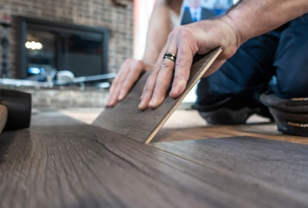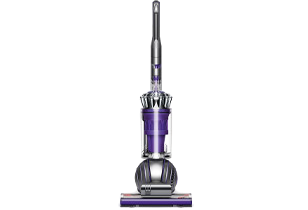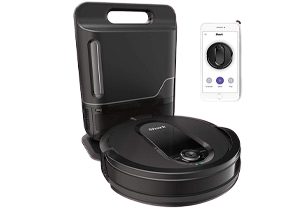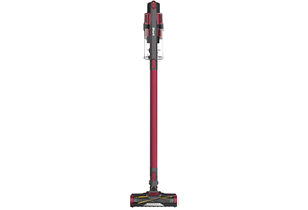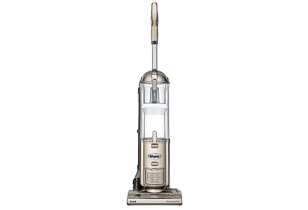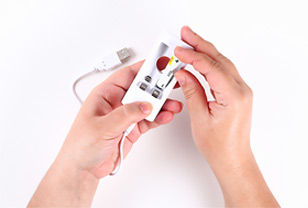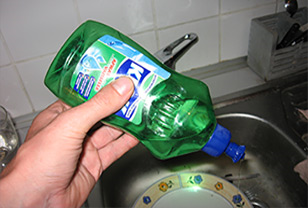How to Dispose of A Vacuum Cleaner: Is It Better to Reuse, Recycle, or Repair?
Unfortunately, many people make the mistake of throwing away their vacuum cleaners in the recycle or trash bin without knowing that many of the electrical parts contain hazardous components. These substances will affect the environment, and they need to be treated in special ways.
Our article will show you how to dispose of a vacuum cleaner in the most environmentally friendly way. Scroll down for more information.
How to dispose of a vacuum cleaner in the correct way.
Vacuum Cleaner Disposal, Recycling & Reusing
When your vacuum is too old or broken, there are some options to choose from: you can either recycle it, fix it, or reuse some of the parts that are still functioning. However, you need to pay attention to the fact that if you decide to dispose of your broken vacuum cleaner, the machine will become an electronic waste item or e-waste. Therefore, as simple as putting the old vacuum in the trash sounds, you must learn to throw out a vacuum correctly.
How to dispose of a vacuum
If none of the above tips have fixed your vacuum problem, you can read our Disposal of Vacuum Cleaners guide below. We have included different reasons why you should recycle your broken vacuum, how to dispose of a vacuum cleaner, and a list of top-rated vacuum cleaners to help you purchase the right vacuum for your home. Let's get started!
Why Should We Recycle A Vacuum Cleaner?
When you recycle your broken vacuum cleaner, you are giving away valuable parts to help other people get access to the material as well as saving the planet's natural resources. Here are reasons why we should recycle a vacuum cleaner.
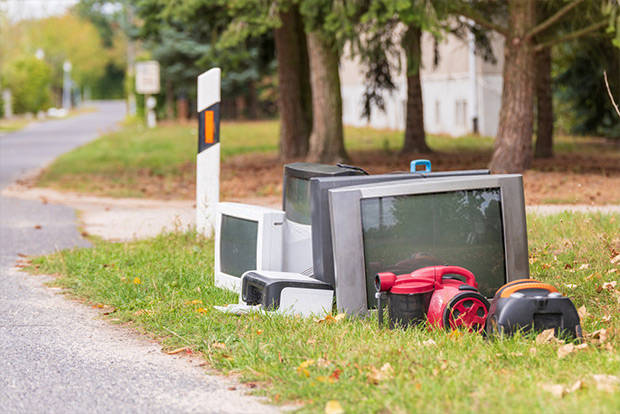
You should not put an old vacuum cleaner in the dumpster
Are vacuum cleaners E-waste?
When your vacuum is broken, it is categorized as electronic waste items or e-waste. E-waste comprises any unwanted electronic product, vacuum cleaners included. If you look around your house, there are electronic devices everywhere, such as refrigerators, air conditioners, coffee makers, microwaves, and much more.
Nowadays, the consumption of electronic home appliances has increased significantly. However, only a small percentage of these devices are recycled properly. That's why learning how to recycle your vacuum cleaner is important to manage unwanted e-waste better while keeping the planet greener for everyone.
Which Part of Your Vacuum Cleaner Is Recyclable?
We now know that recycling your vacuum cleaner isn't as easy as putting it in the recycle bin. But why should we recycle it? There are many different components in vacuum cleaners, and a small number of items aren't recyclable. So here are some examples of recycled parts in your broken vacuum cleaner.
- Metal materials can be melted down and remade into different products.
- Other working parts, such as the motor, the hose, and the filter, can be compatible with other vacuums.
- You can recycle plastic components into other items.
Reduce Toxic Waste and Carbon Dioxide Discharges
Vacuum cleaners contain chemicals such as aluminum, iron, and copper. If you put your unwanted vacuum cleaner with the rest of the garbage, it will release toxic fumes when the metal parts are burned. This problem will cause damage to the soil, water, and the air we're living in.
That's why you must know how to throw out a vacuum in an environmentally friendly way. Plus, making a brand new vacuum will release a substantial amount of carbon dioxide. On the other hand, if you recycle, factories can put recycled parts into a new device which will help reduce carbon dioxide emissions.
Recycling Your Vacuum Helps Save Energy
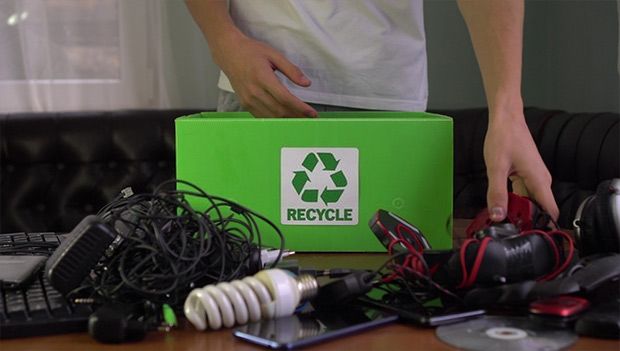
Recycling your vacuum cleaner will help the environment and save more energy
If you recycle your broken vacuum cleaner, you will help save a significant amount of energy. For instance, the metallic components in your vacuum can save up to 72 percent of energy. In addition, you can power your vacuum for more than 30 hours with a kilogram of recycled plastic instead of using the energy to produce new parts.
How to Recycle a Vacuum Cleaner
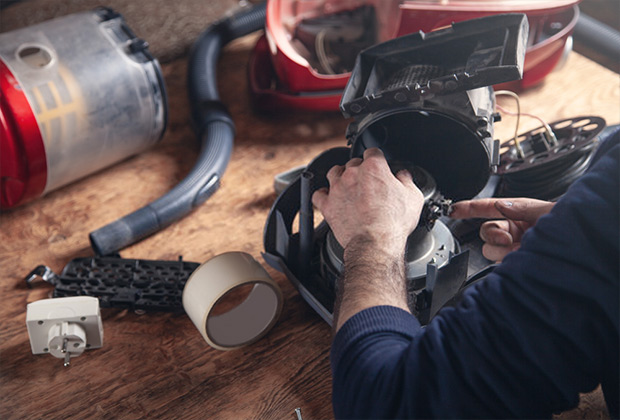
Remember to disassemble your vacuum cleaner before you recycle it
There are different ways to recycle an old vacuum cleaner. It depends on whether your vacuum is still functioning or not. If the vacuum is still working, but you no longer want to use it, then you might consider giving it to somebody else. On the other hand, if the vacuum is broken, there are several recycling methods that you can apply instead of putting it in the trash bin. So what are your options?
➜ RELATED: Dyson V7: Best Choice For Portable Vacuum Cleaning
How to Dispose of a Vacuum If It’s Still Working
Sell The Vacuum
If your vacuum is still in good condition, you can take a picture of the device and post it online to sell it. You might wonder if people want to use an old vacuum cleaner; some people are looking to buy parts of your machine.
You can place your vacuum on different online websites with a fixed price tag, or you can auction it to the highest bidder. If you don't know what price to put on it, search for similar models and see how many people are selling them. We highly recommend that you take several photos of your vacuum and the attachments from a different angle to increase the chance of selling it.
If you'd prefer to sell it to local people, you can try to sell it to a vacuum repair shop or a thrift store. There's another way that you can sell your old vacuum cleaner. You can detach parts of the machine and sell them separately. You might not make as much money, but there will be people interested in buying the motor, the hose, the brushes, and other extra tools.
Trade the Vacuum In
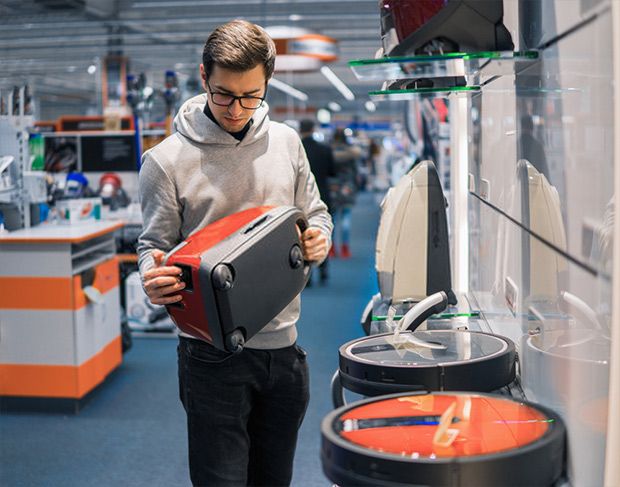
You can trade your broken vacuum cleaner in for another vacuum at the store
If you don't want to go through the hassle of selling your device online, you can choose to trade in your old vacuum machine. It depends on where you get the vacuum cleaner; some stores might allow you to swap the old one for a new machine with a little extra cash.
This way, you don't have to spend too much money on a brand new vacuum and save energy to get rid of the old one. Some stores and companies will take the old machine, renovate it, and sell it again as a second-hand vacuum.
Swap the Vacuum
If you don't want to sell the vacuum or trade it in, you can consider swapping it at a local event. You can find these swapping events at your local libraries, schools, and community centers. If you can’t go to any of these events, you can try to organize it yourself. Tell your friends and family members to bring old devices they want to sell and enjoy swapping.
Give the Vacuum Away

You can give the old vacuum cleaner to a friend or family member
You can also give the vacuum to someone you know who is looking to buy one. They could be a friend or a family member. This way, you can talk about the said vacuum whenever you talk to them or visit them.
Donate the Vacuum
Another option is to donate the old vacuum cleaner to non-profit organizations to send this device to people in need. You can try different places such as Goodwill or Salvation Army. Or you can donate it to your local homeless shelters or animal shelters where they might need a vacuum cleaner. Some repair shops might take the vacuum off your hands and use the spare parts for other goods.
How to Dispose of a Vacuum Cleaner If It's Broken
Please keep in mind that your broken vacuum contains several parts and materials. There are ways to use old parts like the motor, the hose, roller brush, and other accessories in other machines. Additionally, some materials will be melted and made into another product.
Here is what you need to do when you dispose of a vacuum cleaner:
- First, you need to search for recycling centers in your area.
- Contact your vacuum manufacturer for guidance on how to dispose of the machine in the best way.
- Next, disassemble your vacuum cleaner to sell the individual parts.
- Finally, prepare tools such as screwdrivers, pliers, and other kits to detach your vacuum.
Repair
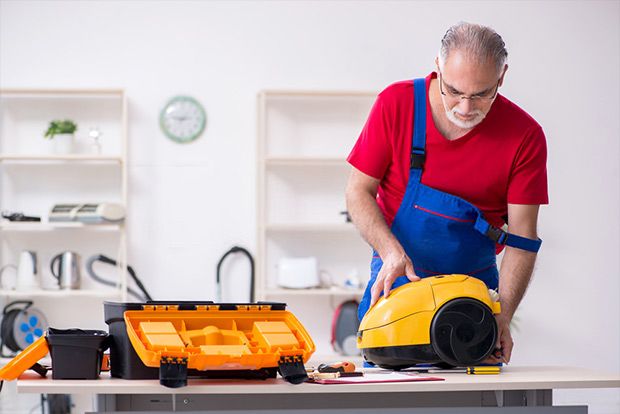
Before you recycle the old vacuum, you could try to repair it first
Before you decide to recycle the vacuum cleaner, you might want to look into what's broken and give it a quick fix. Sometimes, a vacuum loses suction because of a blocked airway or a dirty dust cup. Also, some parts of the vacuum might affect the whole functionality, such as the power cord or a roller brush, which you can get a replacement from the manufacturer store.
Reuse
If you have tried to repair the vacuum, but nothing works, you can remove different machine parts and reuse them. For instance, if the vacuum motor is still working, you can make it into different devices such as a water pump or a toy car for your kid.
Recycle
Here are different ways you can recycle your broken vacuum cleaner and help keep the planet green.
Recycling centers
If you have no idea how to recycle your vacuum cleaner, the best option is to contact a few recycling centers and ask them for advice. They will love to give you a guide on how to remove different parts such as power cords, vacuum hoses, and other plastic materials. Contact different recycling centers since some of them will have limitations on what they can collect. You might be surprised at how many things are made from recycled parts of a vacuum cleaner, like shampoo bottles or traffic cones.
Junkyards
You can sell the metal parts to junkyards for a few bucks. It might not be a lot, but you know it will become a great use for other appliances. You can find junkyards in the industrial centers or the suburban areas.
Nevertheless, the scrapyards only accept metallic components, which means you will have to find other places to recycle the rest of the vacuum. So please remember to disassemble the machine before you take it to the junkyard.
Electronic Shops
If you buy your vacuum in a major electronics shop, you might be able to contact them and offer to recycle your broken vacuum cleaner there. In addition, some stores will offer you reimbursement for bringing the old device back for recycling.
Sell it For Parts
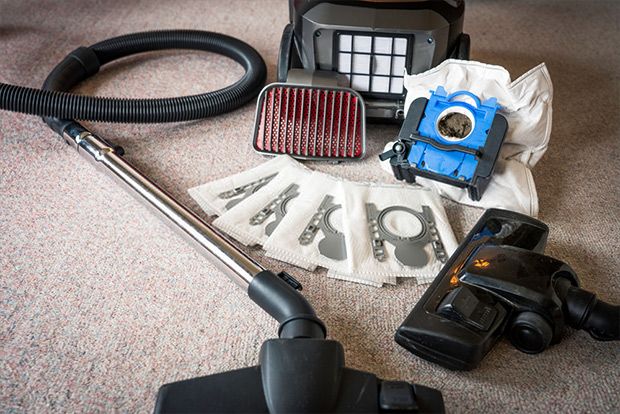
You can sell the old vacuum cleaner for parts
Unlike a working vacuum cleaner, you cannot sell the whole machine if your vacuum is broken. However, you can still sell it for parts such as brushes, hoses, and nozzles. It is best if you take them apart and clean them thoroughly before selling them.
Donation
Even if your vacuum stops working, you can still give it away to someone else who might need the parts. A repair shop will be happy to receive your donation. Every recycling action is better than not recycling.
Common vacuum cleaner issues and troubleshooting
Here are some common vacuum cleaner problems that you might be able to repair before spending big bucks on another brand new cleaning device.
The vacuum stops running
If your vacuum doesn't start, you need to check if it's plugged into the electrical outlet correctly. You could try wiggling or pushing the power plugin and ensure that it's secure and connected to the power source. It might be the electrical source causing the problem; then, you can test it by charging your phone or another device to see if it has power.
If the vacuum is plugged in, it might be the motor that became overheated or the thermal fuse isn't working. Contact your manufacturer if you think there's a problem with the electrical control board.
Lack of Suction
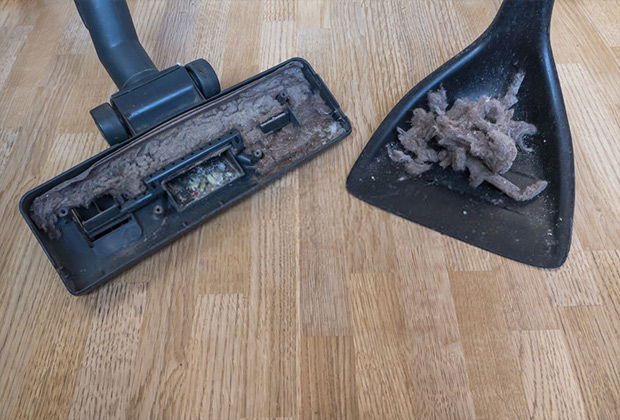
Your vacuum might stop working because of a full dirtbag or a blocked brush roll
If you find that your vacuum loses suction over time, it is best to check the dust bag to see if it's full. Empty the dirtbag and clean it carefully before you put it back into the device. A clogged air filter or a blocked hose can also cause your vacuum to lose suction. We highly recommended that you detach these parts from the main unit and remove any remaining dirt residue inside. Giving your vacuum a thorough cleaning can also help to regain the original suction power.
A Broken Belt
Contact the manufacturer to see if you can replace the vacuum's broken belt with a new one. If you're not familiar with putting the new belt back in, it is important to consult with an expert or get them to replace it for you. Do not run the vacuum if you suspect the belt is broken because it might damage the motor.
The Vacuum Is Noisy
When you find your vacuum making a lot more noise than usual, it could be that the motor fan is damaged. Dirt can come inside the motor area and create blockages that lead to a broken motor fan. Unfortunately, it is not possible to repair a broken fan, but you can get a replacement from your manufacturer.
The Brush Stops Spinning
The problem with the brush roll can come from a broken or overstretched belt. First, you should check if the belts are aligned and in good condition. The next step is to look at the brush roll to see if there's any blockage. It is common to have a jammed brush roll if you have furry pets. Use a pair of scissors to cut out any tangled hair around the brush roll before placing it back into the machine again.
How to Clean a Vacuum Filter
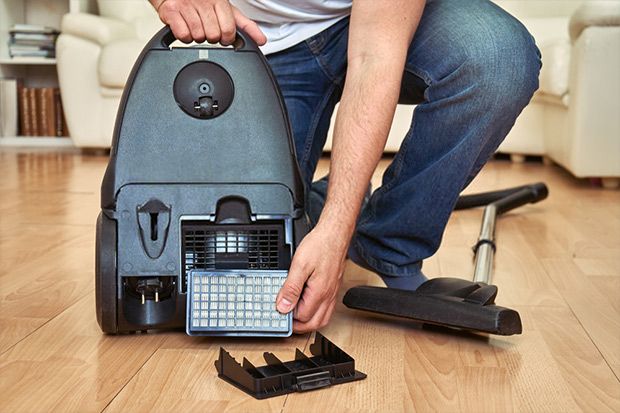
How to clean a vacuum filter the correct way
Before you contact the recycling center, we highly recommend that you disassemble the vacuum and clean all the parts. Here's how to clean a vacuum filter.
Step 1: Unplug your vacuum from the power source. If you use a cordless machine, remove the battery.
Step 2: Detach the filter from the main unit. Empty the filter and remove any dirt residue inside the filter by tapping it on the side.
Step 3: Wash the filter gently by running it under cool water until the water runs clear. Try not to use soap to clean your filter.
Step 4: Leave your filter out to dry. We suggest that you let it air dry for at least 24 hours.
Step 5: Put the filter back in the machine and start cleaning.
Tips:
Read the manual carefully to learn if the filters are washable or not. It is best to clean the filter at least once every month if you use the machine weekly.
How to Make a Vacuum Smell Better
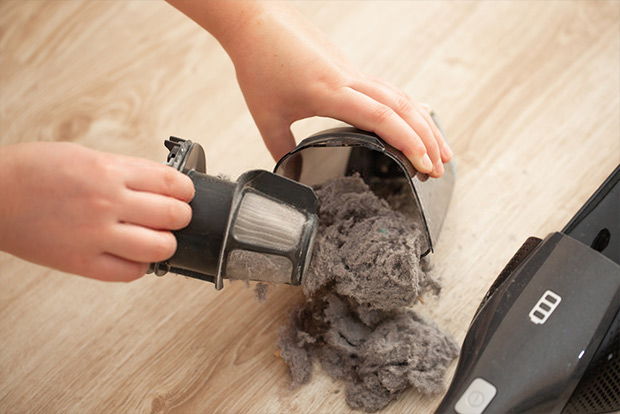
Clean the vacuum regularly and empty the dust cup to make the vacuum smell better
If you notice an unpleasant odor coming from your vacuum cleaner, it is best to remove it right away. Here is how you can make your vacuum smell fresh again.
Step 1: Empty the dust bag. Use a small amount of baking soda or white vinegar to clean it thoroughly.
Step 2: Clean your filters. If the filters aren't washable, replace the filters every six to twelve months.
Step 3: Check your roller brush to see if there's any residue or tangled pet hair. Use a pair of scissors to cut and remove any hair that got stuck inside the brush. Wash the brush with water and soap.
Step 4: Clean the hose by removing any remnants and wash the hose in the sink.
Step 5: Spray essential oils in the bag or dirt bin to remove smelly odor. You can also use powdered cinnamon to reduce germs and give off a nice aroma.
➜ Related: How To Make Vacuum Smell Better - Why Does My Vacuum Cleaner Smell Bad
Conclusions
Vacuum cleaners contain several hazardous parts, and throwing them in the trash will affect people's health and the environment. That's why we need to know how to dispose of a vacuum cleaner in an environmentally friendly way. We hope you enjoyed reading our guide and that you will encourage other people to recycle their old vacuum cleaners.
Please share this with your family and friends. Also, leave a comment if you have any questions for us.
FREQUENTLY ASKED QUESTIONS
- 01. What can you do with old electricals?
-
You can sell these parts to repair shops or scrap yards. You can also donate them to recycling centers.
- 02. Can I put electrical items in the trash bin?
-
You shouldn't put electrical items in the trash bin since they are not biodegradable and will discharge toxic fumes into the atmosphere.
- 03. What can you do with old vacuum cleaners?
-
There are many ways you can deal with old vacuum cleaners. You can either repair, reuse, or recycle it. Depending on the vacuum's condition, you might even sell it online or trade it in for some money.
- 04. Can you throw a vacuum in the dumpster?
-
As simple as it sounds, you should never throw your old vacuum in the dumpster. Since your vacuum contains several toxic components, leaving it in the dumpster will release these hazardous substances.






